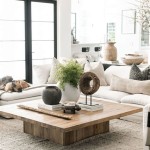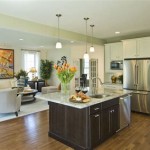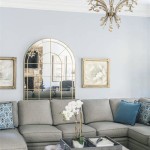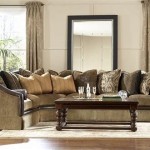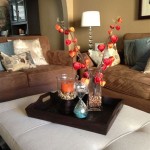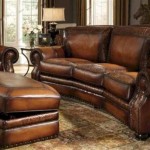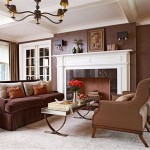Wood Panelling in the Living Room
Wood panelling offers a timeless and versatile design element for living rooms, adding warmth, texture, and visual interest. Whether seeking a classic, rustic, or modern aesthetic, wood panelling can transform a living space. This article explores the various aspects of incorporating wood panelling into a living room, from selecting the right type of wood to installation and maintenance.
Choosing the Right Type of Wood
The selection of wood species significantly impacts the overall look and feel of the panelling. Each type of wood possesses unique characteristics regarding colour, grain pattern, and durability. Popular choices include oak, known for its strength and prominent grain; pine, a more affordable option with a lighter colour; and walnut, prized for its rich, dark tones. Factors to consider when choosing wood include budget, desired aesthetic, and the existing décor of the living room.
Panel Styles and Designs
Wood panelling offers an array of design possibilities. Traditional raised panels create a classic, formal look, while shiplap panelling provides a more relaxed, coastal vibe. Board and batten panelling offers a rustic, farmhouse aesthetic, while flat panels offer a contemporary, minimalist appeal. The choice of panel style should complement the overall design scheme of the living room and reflect the homeowner's personal style.
Installation Methods
Proper installation is crucial for achieving a professional and long-lasting finish. Depending on the type of panelling and the existing wall surface, various installation methods can be employed. Some common methods include nailing directly to studs, adhering to drywall, or using a furring strip system. Ensuring a level and plumb surface before installation is essential for a smooth and even finish. Consulting with a professional installer is recommended for complex projects or for homeowners lacking experience with carpentry.
Finishing and Maintenance
The final stage, finishing, protects the wood and enhances its natural beauty. Various finishes, such as paint, stain, or clear coat, can be applied to achieve the desired look. Paint allows for a wide range of colour options, while stain enhances the natural wood grain. A clear coat provides protection while maintaining the wood's natural appearance. Regular cleaning and occasional reapplication of the finish will help preserve the panelling's beauty and extend its lifespan. Dusting with a soft cloth and avoiding harsh chemicals will maintain the finish's integrity.
Cost Considerations
The cost of wood panelling varies depending on the type of wood, the panel style, and the size of the area to be panelled. Reclaimed wood can be a cost-effective option, while exotic hardwoods will command a higher price. DIY installation can save on labour costs, but professional installation is often recommended for complex projects. Factoring in the cost of materials, installation, and finishing will help homeowners establish a realistic budget.
Integrating with Existing Decor
Wood panelling can seamlessly integrate with a variety of décor styles. In a traditional living room, wood panelling can complement ornate furniture and classic architectural details. In a modern space, clean-lined panelling can add warmth and texture, contrasting with sleek furnishings. Careful consideration should be given to the colour palette, furniture styles, and existing architectural features to ensure a cohesive and harmonious design.
Benefits of Wood Panelling
Beyond its aesthetic appeal, wood panelling offers several practical benefits. It can enhance insulation, reducing energy costs. Wood panelling can also help to soundproof a room, minimizing noise transfer. Furthermore, wood is a durable and long-lasting material, adding value to a home. The natural beauty and inherent warmth of wood contribute to a comfortable and inviting living space.
Potential Drawbacks
While wood panelling offers many advantages, it is essential to be aware of potential drawbacks. Wood can be susceptible to moisture damage, making it less suitable for humid environments. Regular maintenance is required to prevent warping, cracking, and other issues. Additionally, wood panelling can darken a room, particularly if using darker wood species or stains. Careful planning and consideration of these factors are crucial before deciding to install wood panelling.
Lighting Considerations
Lighting plays a critical role in showcasing the beauty of wood panelling. Natural light enhances the natural grain and colour of the wood. Artificial lighting, such as wall sconces or recessed lighting, can create dramatic effects and highlight the texture of the panels. Carefully planned lighting can transform the ambiance of a living room and showcase the unique characteristics of the wood panelling.

10 Creative Wood Paneling Ideas Best Wall Rooms

Living Room Wood Accent Wall Form At

Living Room Wall Panelling The Library Ladder Company

Living Room Wall Panelling Ideas 2025 Inspo Panels World

35 Wall Paneling Ideas For An Instant Character Boost In 2025

23 Ideas For Using Panelling In Your Living Room Houzz

Introducing Wood Panelling And A Dream Dressing Room Rock My Style Daily Lifestyle Blog

Designing Your Own Stunning Living Room Accent Wall Andor Willow

Create Beautiful Wood Accent Wall Panels For Your Living Room

13 Wall Panelling Ideas For Your Living Room Leader Floors Blog

